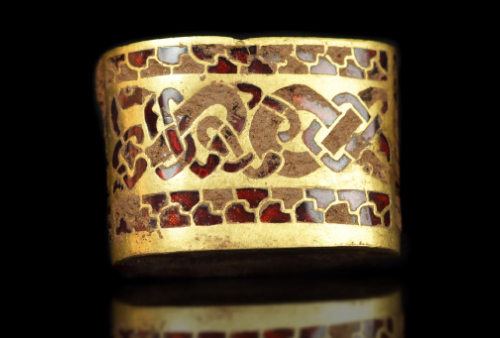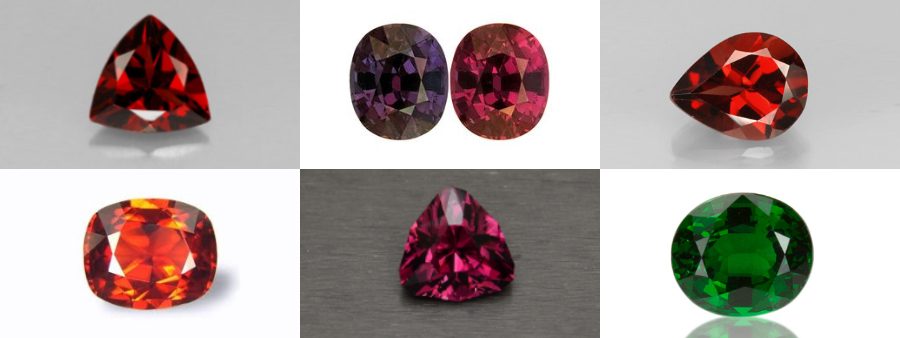For each month of the calendar year, a gemstone has been selected to represent it. For January, that gem is garnet. Legend has it that the garnet brings peace, prosperity, and good health to the home of the wearer. Those are beautiful sentiments to celebrate birthdays in the first month of the year, when everyone is looking towards the future with hope and promise in their hearts.
Garnets, which are chemically silicates (meaning they are minerals that contain silicon and oxygen and usually metal ions; silicates make up most of the Earth’s crust, with some geologists’ estimates as high as 90%), are typically thought of as red. And since most garnets are red in color, this is a pretty fair assessment. The name “garnet” is derived from the Latin word granatus, which was an off-shoot of granum, which means seed or grain. It is thought that this naming was in reference to the lively red casing that encapsulates pomegranate seeds. Garnets, in addition to being liberally used in the making of jewelry, also have some industrial and manufacturing applications. Garnet is often used as an alternative to silica sand in sandblasting, as well as an abrasive on sandpaper. Garnet can also be used to cut steel when used in a high pressure water jet.

An 8th century example of the garnet cloisonné technique
In jewelry, garnet was first used in the Bronze Age, when most garnet was inlaid in gold using the cloisonné method. In cloisonné, thin strips of metal are affixed to a larger base (like a pendant, for example). The resulting compartments are called cloisons in French, which is where the name cloisonné originates. The compartments are then fitted with gems. In more modern times, enamel has been used in place of gemstones. Garnet was a favorite gem in cloisonné pieces, giving rise to the term “garnet cloisonné.”
Mined mostly in North America, sub-Saharan Africa, Europe, and Sri Lanka, garnets are often red, ranging from a fiery orange to a dark, brownish red. The dark brown red is reminiscent of blood, which explains why some Asiatic tribes used them in weaponry, believing the garnets’ blood red color enhanced their weapon’s deadly effects. Although most garnets do exhibit the darker red color, they are also found in beautiful green colors, from a pale yellow green to a deep and rich green. The different colors are the result of different metal ions in the garnet’s composition. The most common are aluminum (which are largely responsible for the red and orange hues) and the calcium (primarily responsible for the greens and purple-ish tones). Tsavorite garnets are a beautiful rich green, often mistaken for other gems, like emeralds. But tsavorite garnets are usually far nicer in terms of clarity. For all its beauty, emerald is usually rife with cloudy inclusions. Not all garnets are remarkably free of inclusions. Many gemstones have inclusions. Garnets that do not have inclusions are reminiscent of the clarity and sparkle associated with diamonds. These types of garnets are called demantoid garnets. The demantoid classification doesn’t have anything to do with the color or chemical make-up of the garnet; it is simply a nod to the clarity of the gem.

(From L-R, top to bottom) Pyrope Garnet, Color Changing Garnet, Almandine Garnet, Spessarite Garnet, Rhodolite Garnet, and Tsavorite Garnet
Although most garnets come in reds, greens, oranges, and yellows, rare color-changing garnets were found in 1990 in Madagascar. Resulting from the combination of pyrope (the fiery red) and spessartine (the dark orange), this garnet appears to shift colors between blue-green and purple.
If you are looking for garnet jewelry to commemorate a January celebration, stop into the downtown Brighton, MI showroom of Andre’s Fine Jewelers. The expert jewelers will help you find or design the perfect garnet jewelry.





